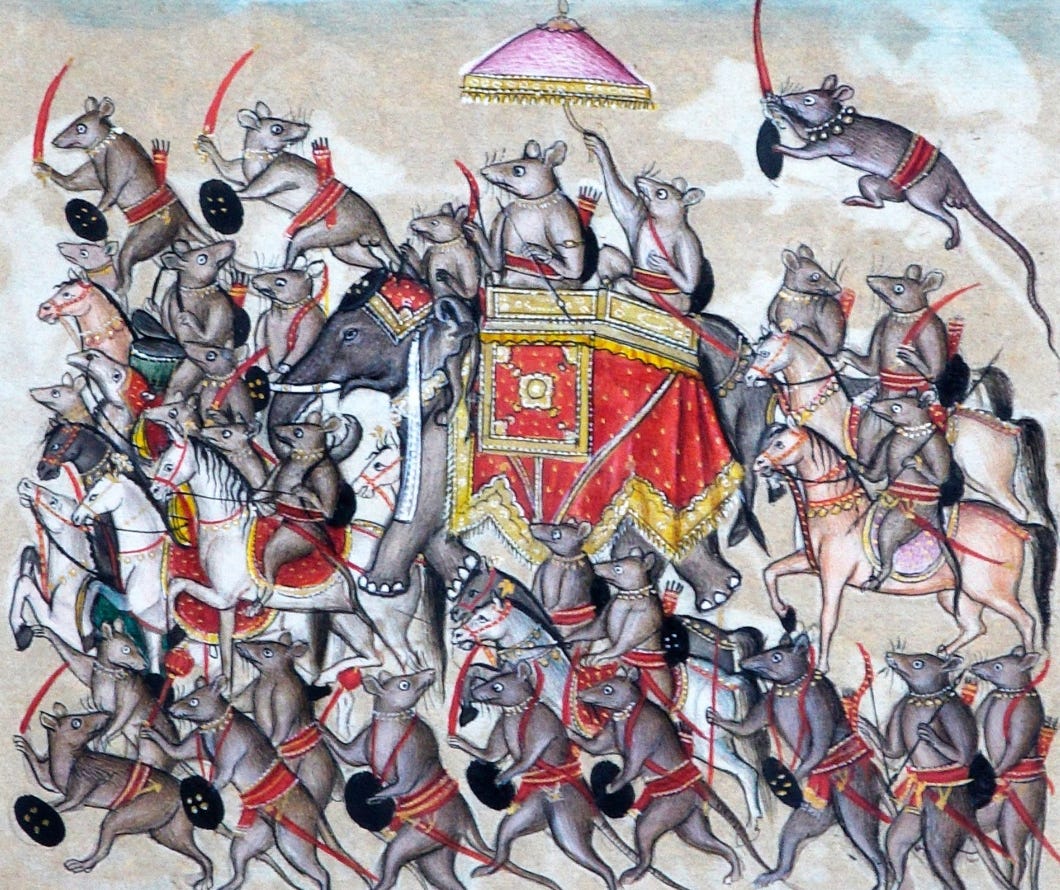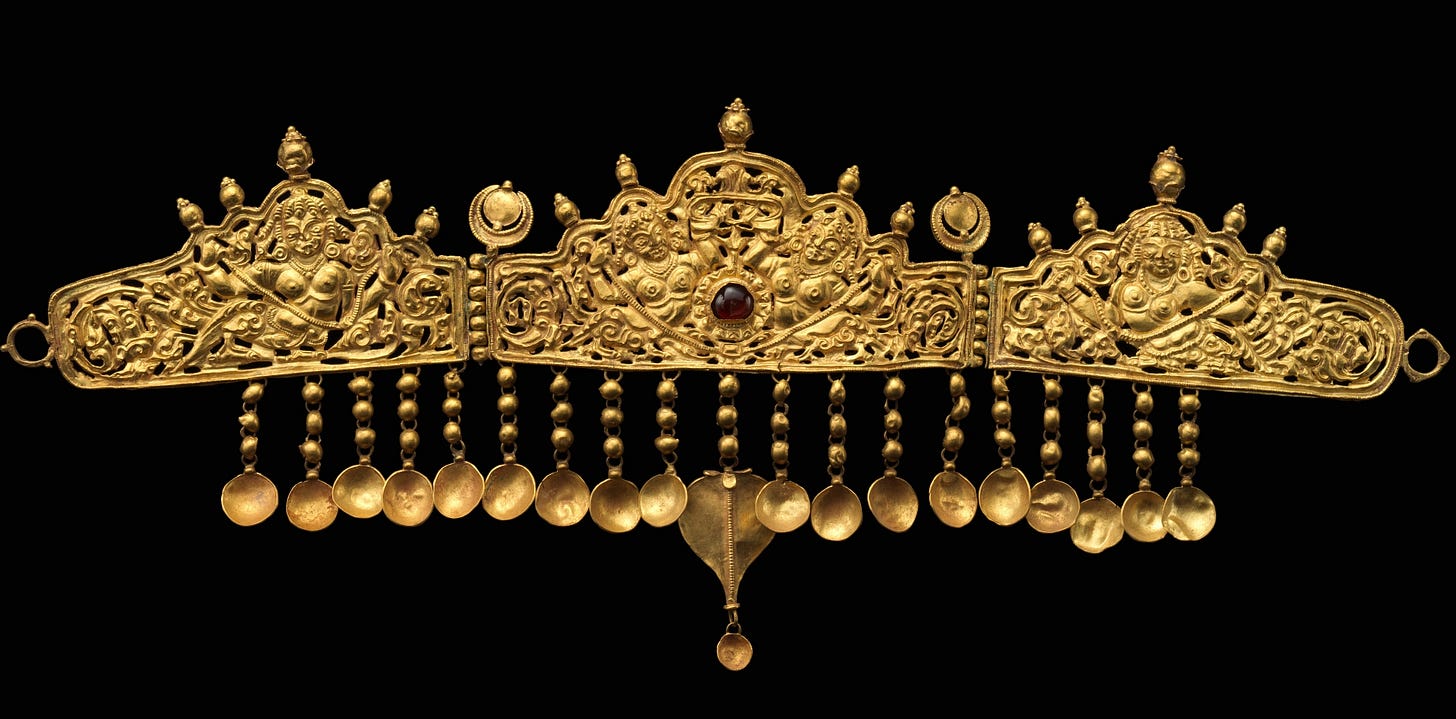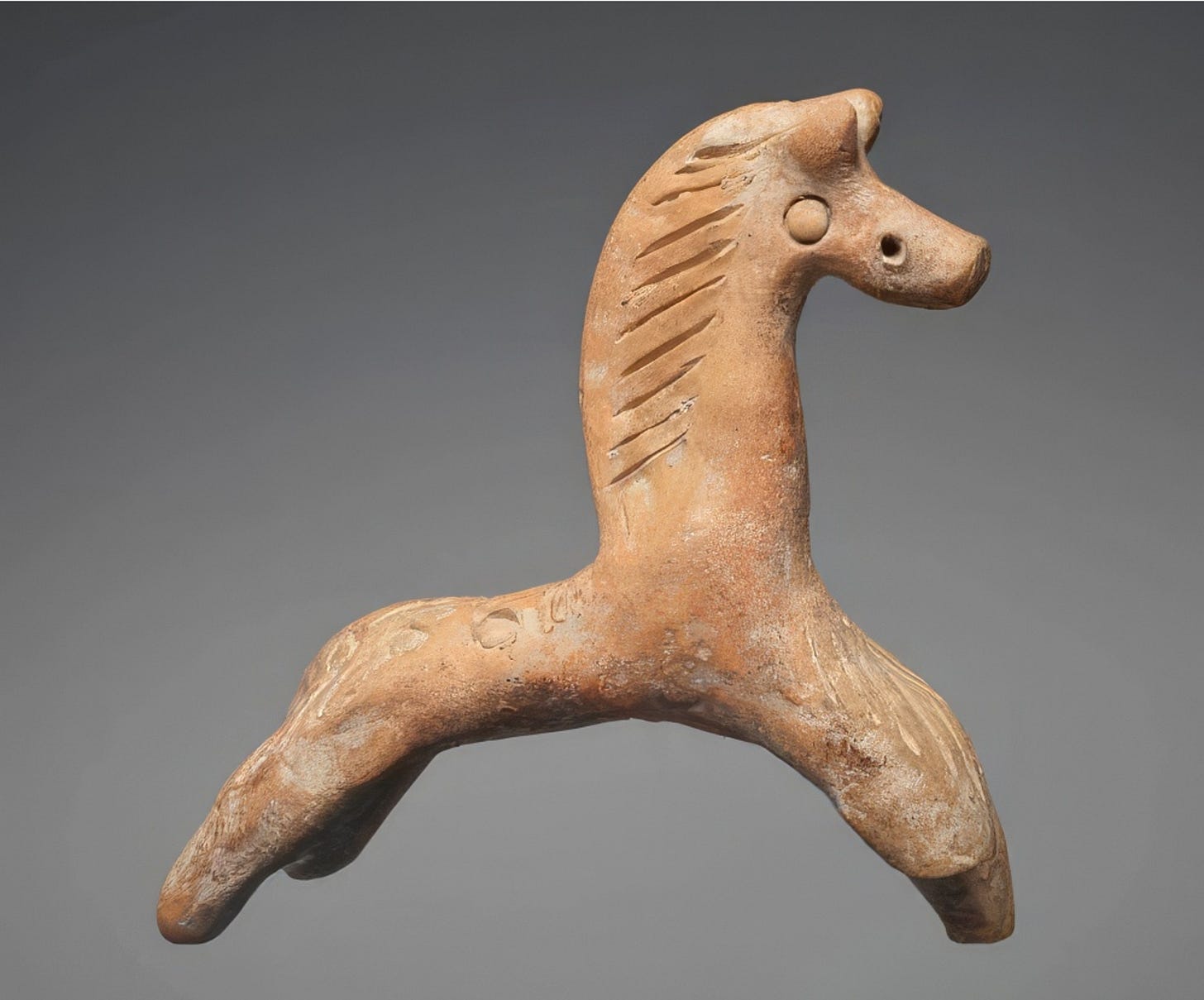A Seventeenth-century Cat and Mouse Chase, Breathtaking Metallurgy from Kashmir and an Ancient Horse from Patna
Welcome to our corner of the internet - readers!
When the Rats Came Together to Fight the Cats
A retinue of rats — wielding swords, shields, bows and arrows — marches along in military procession. Amongst them the king — distinguished by the pink parasol over his head — rides an elephant, seated in his regal howdah. This folio illustrates the basic premise of the 17th-century manuscript Chuhanama — a clash between a cat and an army of rats, who revolt against the former’s ruthless killing spree.
While researching the manuscript arts of early-modern Deccani kingdoms, Pooja Savansukha stumbled upon this hilarious image which left her rather perplexed. There is not much known about the manuscript, but one can risk some conjectures — What if the Chuhanama’s narrative is a subtle allusion to the 17th-century Mughal campaign in the Deccan? That was a campaign in which Aurangzeb resorted to a series of wars to gain sovereignty over the region, only to initiate the demise of the Mughal empire.
This becomes even more pertinent when looking at another folio from the Chuhanama, which portrays a confident cat single-handedly fighting off the aforementioned army of rats with her bow and arrows. The story concludes with the defeat and capture of the cat, who is eventually burnt alive. Read about more illustrated manuscripts from the Deccan, on the MAP Academy’s Encyclopedia of Art.

Part-Human, Part-Bird: Spotting Kinnaris on Golden Ornaments
In South Asian mythology, there exist celestial beings who are part-human and part-bird. They are known as kinnaras, if male, and kinnaris, if female. Adept at music, dance and poetry, they are typically depicted with the head, torso and arms of a human, and the wings, tail, and feet of a swan. It is while researching the history of these mythical creatures in South and Southeast Asia, that Shrey Maurya came across an exquisite three-piece repoussé diadem with four engraved kinnaris and gold-baubled hangings, housed at the MET museum.
An exercise in exceptional metallurgical craftsmanship, this 9th-10th century ornament appears to have been the work of Kashmiri artisans. It showcases iconography reminiscent of the 9th-century temple of Avantisvamin in Avantipur, Kashmir. Additionally, the presence of kinnaris — a symbol in both Buddhist and Hindu cosmos — reflects the political transition from Buddhism to Shaivism that Kashmir was undergoing during this period.
Kinnaris are also found in the literature, paintings and sculptures of Southeast Asia, as one of the many mythical beings that inhabit the forest of Himavanta (the Himalayas). Adorned in ornate costumes, these beings also feature in dramatic and dance performances of Thailand. Fascinatingly, their inimitable musical skills led to the naming of an ancient Indian string instrument as the Kinnari Veena. You can find an image of it in the book The Music and Musical Instruments of Southern India and The Deccan, by CR Day, published in 1891, and available freely through this link.

Horses in Terracotta: The History and Symbolism of Equine Figures in Indian Folk Art
Imagine yourself amidst the cacophony of a fair: hawkers beckon curious children while swatting flies away from delectable sweets, artisans advertise their wares by laying them out on the ground or hanging them from the roof of their tents and people meander aimlessly fascinated by the sights on display — a core memory for many. For those of us from the Indian subcontinent, in this nostalgia also lies a blurry image of artisans selling terracotta sculptures, those rusty red horses, pots and glasses that somehow find their way to our homes.
Walking down this memory lane, Shrey Maurya found herself face-to-face with an endearing terracotta horse from 3rd–4th century BCE Pataliputra, the modern-day city of Patna in Bihar. On view at the Santa Barbara Museum of Art, the ancient steed has a highly stylised figure with a long, flowing mane and carved details that evoke the texture and contours of its hide. Although a dull ochre, it is reminiscent of terracotta horses at Bankura, West Bengal and Kodagu, Karnataka.
Throughout the history of the Indian subcontinent, there appears to be a particular affinity towards making horse figurines in the folk arts. These horses often take up symbolic roles — as the mount of local gods, as offerings, as ritual sacrifice and as tokens of wish fulfilment. In fact, villages in Tamil Nadu have a custom of offering horses, as vehicles, to the guardian gods Aiyanar and Muttiyan. These gods are believed to ride the horses at night, warding off evil from the village.
Was this ancient horse from Pataliputra a valiant fighter of malevolent spirits? Or was it simply an artist exercising his skills in stylised replication?

We hope this list has inspired you to do some research of your own — if you have recommendations you would like to share with us and our other readers, do comment below!





Your perspective is refreshing